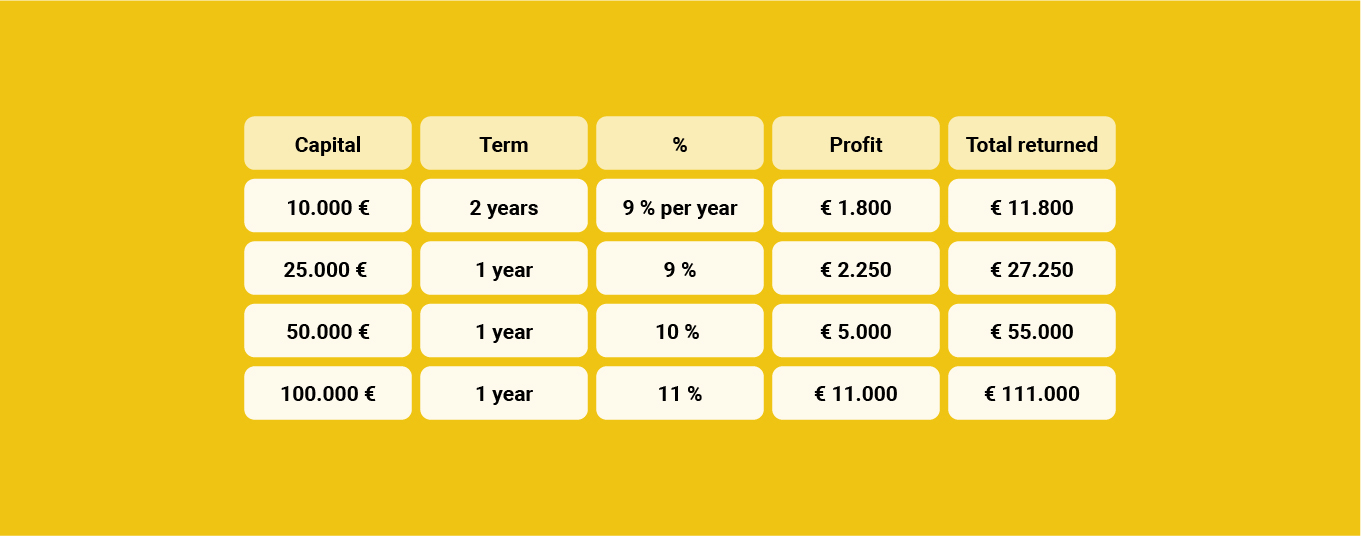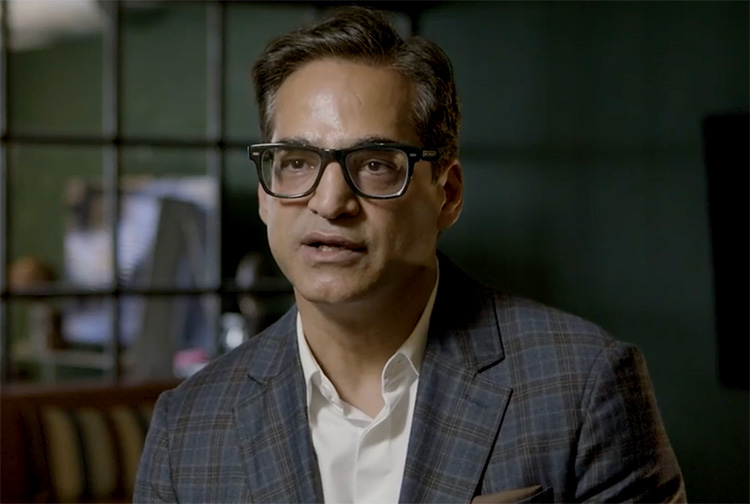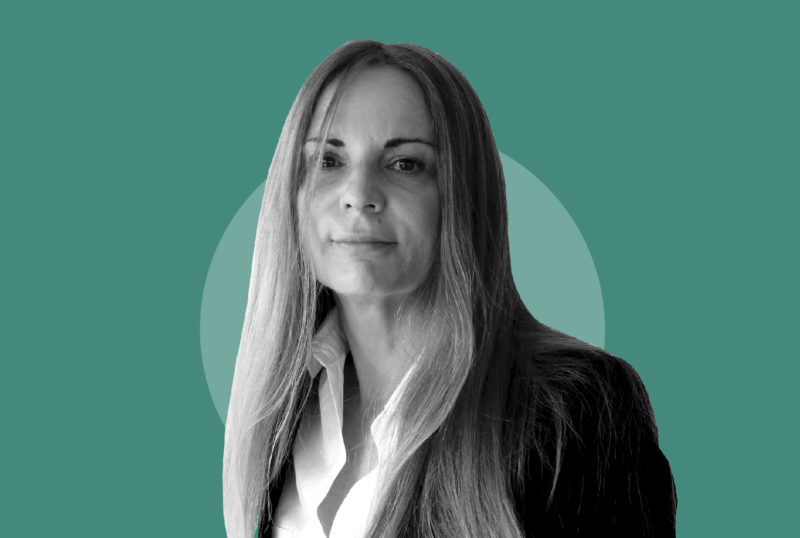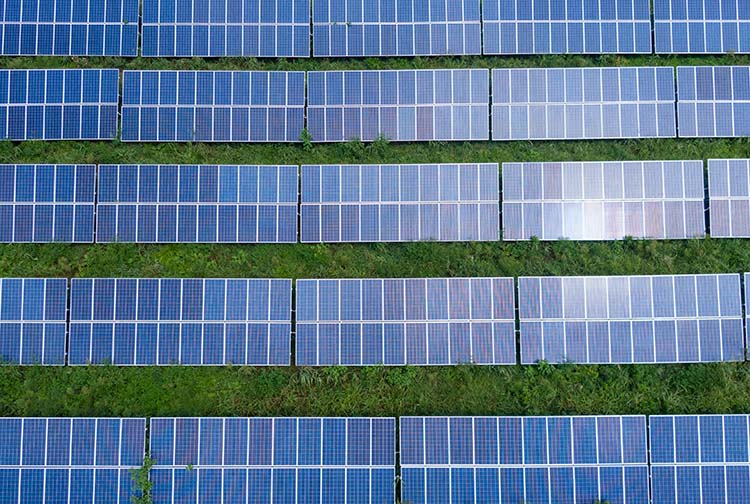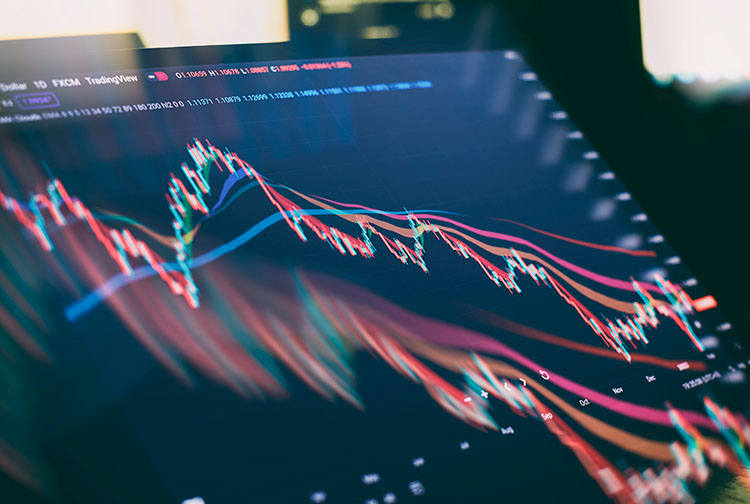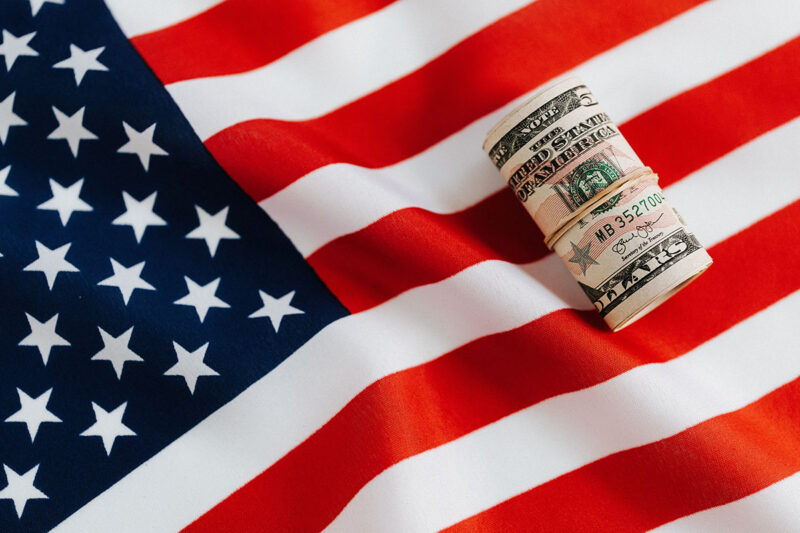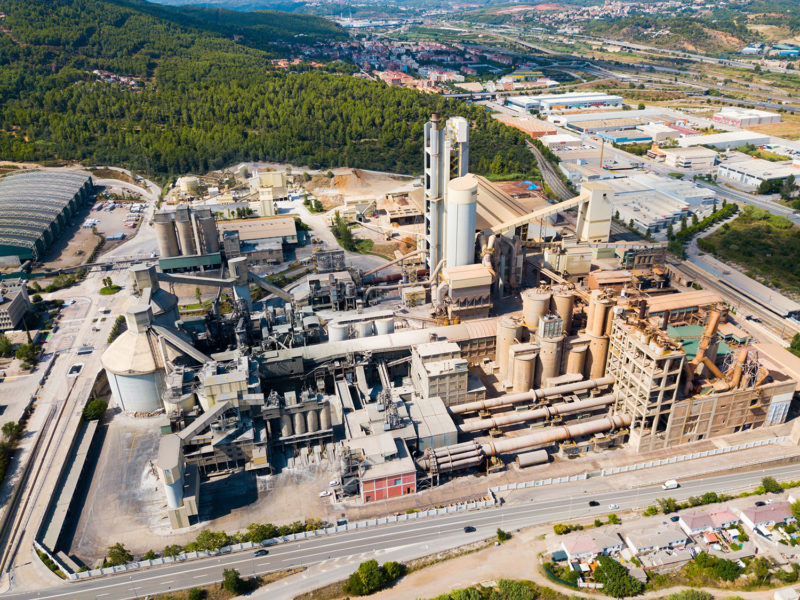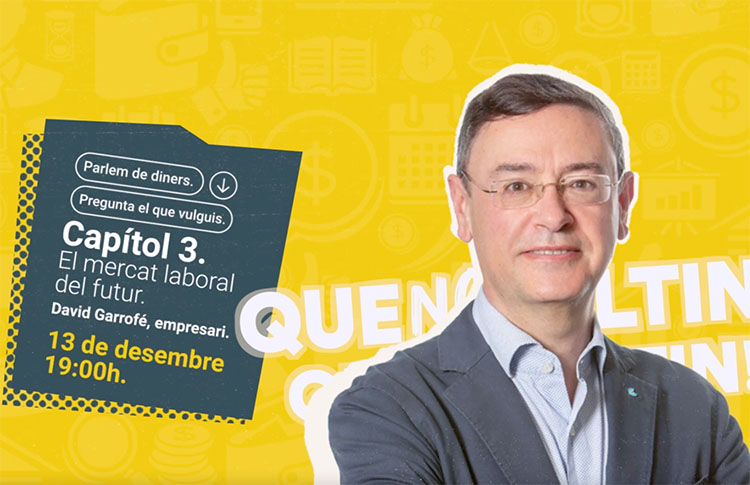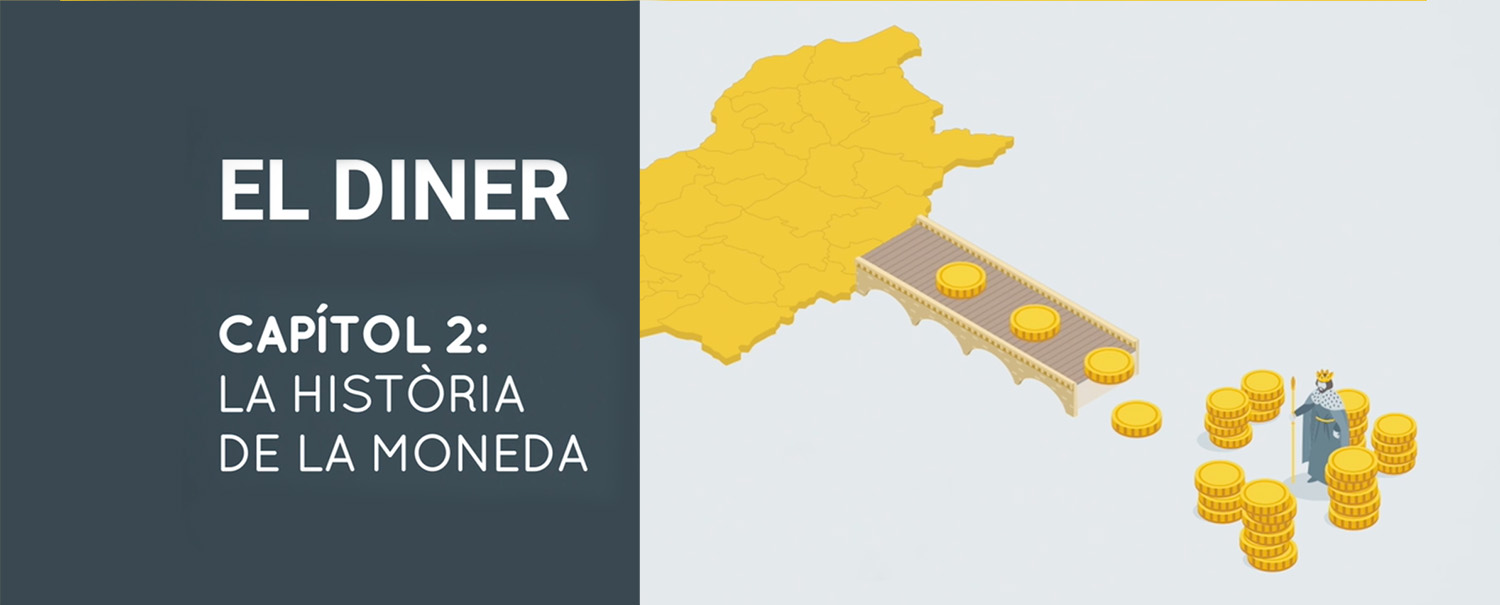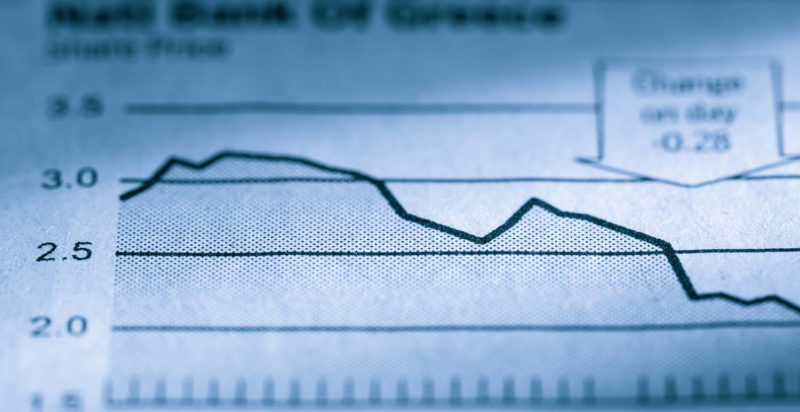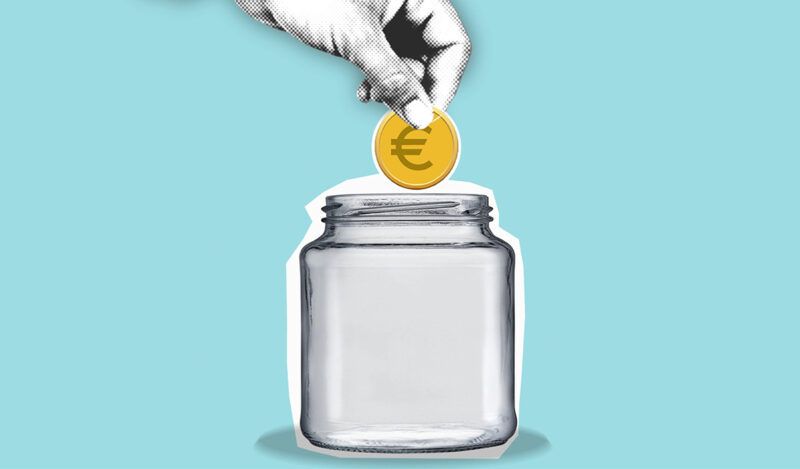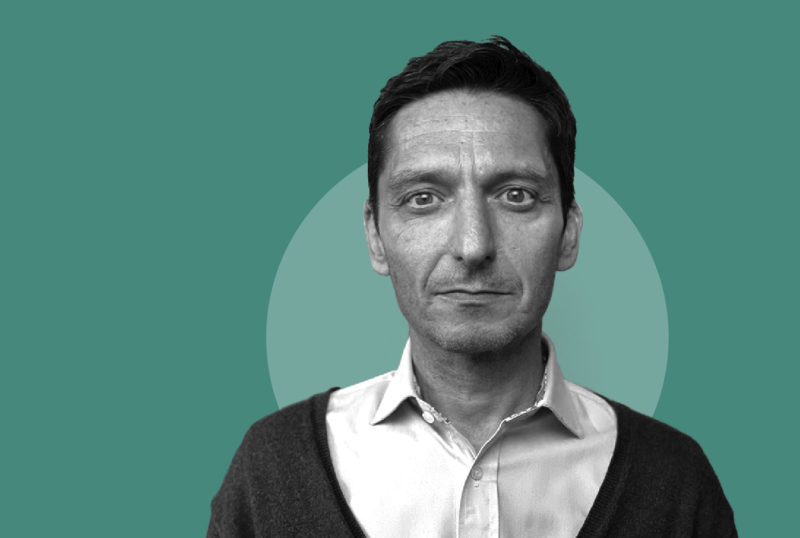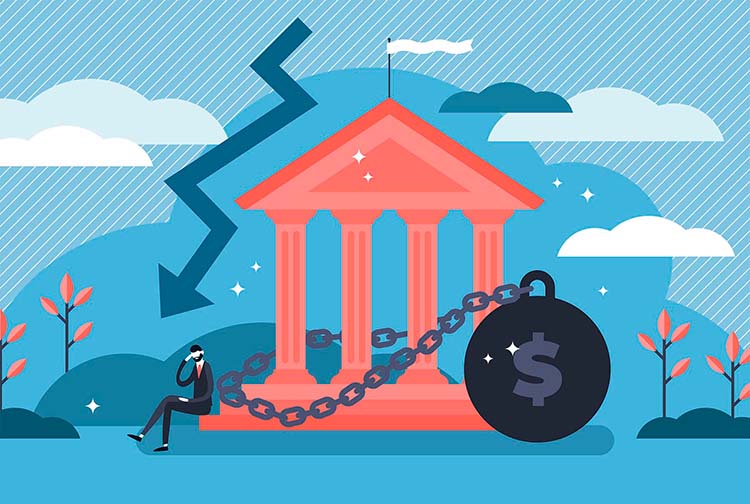Litigation Funding: high returns & social justice
Litigation Funding, which 11Onze Recommends, is simplified and adds housing claims. It achieves returns of between 9% and 11% for a minimum contribution of €10,000.
At the request of its community, 11Onze has worked to get its UK provider to offer the best conditions on one of the products that 11Onze Recommends: Litigation Funding. What are the improvements?
A simplified calculation
Litigation Funding will provide a fixed annual return. Until now, the return was calculated according to the average inflation rate in Spain during the period of the litigation. To make the calculations simpler, the returns will now range from 9% to 11% depending on the amount contributed.
More affordable access
Until now, Litigation Funding was designed for people who could contribute a minimum capital of €25,000. Now, however, the entry barrier has been lowered to allow savers from €10,000 to participate. In the case of the minimum contribution, however, the duration of the contract is two years at 9% per annum.
Social housing claims
In the UK, if you live in rented social housing that is in poor condition, the law requires the landlord to make repairs to ensure a decent standard of living. But the UK has the oldest housing stock in Europe, as many of the buildings were built during the industrial revolution and the Victorian era. Although these dwellings are appreciated for their aesthetic features, their age requires a conservation and maintenance effort that is not always carried out.
Many of these dwellings are owned by local councils or Social Housing Associations, which are creating a grievance for tenants with few resources.
Profit and social justice
Litigation Funding that 11Onze Recommends is a social justice product because it lets us finance lawsuits against banks and institutions that abuse citizens. Right now, our UK provider is arranging litigation funding with a win rate of over 90%. This is due to the fact that many large banks have been proven to have committed illegal practices against their clients and have had to provide more than 60 billion euros. For their part, municipalities are responsible for having neglected their social housing, causing damage to tenants who will have to be compensated. Litigation Funding, which 11Onze recommends, enables these claims to be pursued by financing the court cases of the pertinent law firm. In return, the profits are shared between the plaintiffs and those who finance the lawsuits.
Safer and more profitable?
Litigation Funding is a product that in the short term, for 1 or 2 years depending on the amount, generates high returns, between 9% and 11%, well above the average of Spanish investment funds (1.91% average return in the last 15 years) or the returns of the accounts offered by Apple to its American clients. Apple offers 4.5% while the minimum return of Litigation Funding is double this amount. In any case, it is a low-risk product because the capital contributed by the litigation is insured with an AM Best insurance that fully covers it, regardless of the amount contributed.
If you want to find out how to get returns on your savings with a social justice product, 11Onze recommends Litigation Funding.
Banks that facilitate business in the defence and border control sector have increased their investments in the military-industrial complex.
This is the conclusion of a report published in March by the Delàs Centre for Peace Studies as a result of the Banca Armada campaign, which aims to inform and raise awareness in society so that it forces financial institutions to cut all ties with the defence and security industries.
It is an initiative financed by Barcelona City Council within the framework of the project “From armed banking to ethical banking, disarmament starts here”, which, in addition to the Delàs Centre, has involved the participation of several organisations working in the field of demilitarisation, ethical financing and the culture of peace, such as the Fundación de Finanzas Éticas, Coop57, and the Alternativa Antimilitarista Moc.
Specifically, the report looks at the actors facilitating the militarisation of countries around the Mediterranean and border control, which campaigners describe as ‘border warfare’. At the same time, it criticises the European Union for making its borders increasingly impenetrable to the flood of migrants, victimising them and violating their rights.
All the big banks are involved
In the international ranking of armed banking, practically no one is spared, including large institutional investors, financial institutions and insurance companies, most of them based in the United States. As for the European Union, entities such as Deutsche Bank, BNP Paribas Crédit Agricole and Barclays Bank stand out.
In this list we also find Banco Santander and BBVA with 4,985 and 4,752 million dollars, respectively, followed by the Sociedad Estatal de Participaciones Industriales (SEPI), a public entity, with 4,129 million, the only entities from the Spanish state that are in this world ranking.
With regard to the Valencian Community, banking entities such as the Bankia-CaixaBank group and Banco Sabadell stand out, with 182 and 95 million respectively. Specifically, between credits and loans, CaixaBank has invested up to 110 million euros in Boeing and Banco Sabadell 66 million in Airbus. Despite the fact that these aerospace companies only have a part of their turnover in the defence sector, especially Airbus with 82% dedicated to commercial aviation and 18% to the defence industry, the report also includes its subsidiaries and shareholdings in entities that do have a direct relationship with the arms industry.
Perhaps the most surprising aspect of this report is the presence of credit cooperatives such as Caixa d’Enginyers and Caja Rural, since they have investments in companies that contribute to border control through the manufacture of radars or technological consultancy for the Schengen border area. Faced with a totally globalised industrial sector, which monopolises all kinds of companies not only in the aerospace sector but also in other technological fields, it seems practically mission impossible to dissociate banking from the defence industry, two highly politicised sectors.
11Onze is the community fintech of Catalonia. Open an account by downloading the app El Canut for Android or iOS and join the revolution!
Els ‘forwards’ i els ‘swaps’ de divises generen futures obligacions de pagament que no apareixen en els balanços ni en les estadístiques oficials de deute. Segons el Banc de Pagaments Internacionals, aquest deute ocult ascendeix a 39 bilions de dòlars en el cas dels bancs i a 26 bilions en el de les entitats no bancàries amb seu fora dels Estats Units.
Els ‘forwards’ de divises són contractes vinculants que fixen el tipus de canvi per a la compra o venda d’una divisa en una data futura, mentre que els ‘swaps’ de divises són acords entre dues parts per intercanviar pagaments d’interessos de préstecs en dues divises diferents.
Els primers serveixen de cobertura davant la volatilitat del mercat canviari. Els segons solen utilitzar-se per aconseguir finançament en moneda estrangera amb un tipus d’interès més favorable que els dels crèdits que es poden obtenir en un mercat estranger. Però ni els uns ni els altres es reflecteixen en els balanços de les empreses ni en les estadístiques oficials de deute.
Creixement exponencial
El problema és que, com adverteix el Banc de Pagaments Internacionals (BIS per les seves sigles en anglès), a mitjan 2022 els bancs de fora dels Estats Units amb accés directe al crèdit de la Reserva Federal devien uns “39 bilions de dòlars” si sumem els seus ‘forwards’ i ‘swaps’ de divises. És més del doble del deute en dòlars que consta en els seus balanços i més de deu vegades el seu capital.
En el cas de les entitats no bancàries amb seu fora dels Estats Units, l’import ascendeix a “26 bilions de dòlars”, el doble del deute en dòlars que consta en els seus balanços i 9 bilions més del que devien l’any 2016.
El volum total d’aquest deute gairebé s’ha doblat respecte a l’any 2008. Els inversors han aprofitat la relaxació monetària i uns tipus d’interès ultrabaixos per a augmentar el seu palanquejament a la recerca de majors rendiments.
Fora del balanç
Aquest mercat de divises porta implícit un enorme endeutament en dòlars que queda ocult, ja que, a diferència d’altres derivats com els acords de recompra o ‘repos’, les obligacions de pagament dels ‘forwards’ i ‘swaps’ de divises es registren fora del balanç.
Les obligacions de pagament d’aquests derivats ascendeixen a quantitats astronòmiques. Considerant totes les divises, els imports pendents a la fi de juny de 2022 van assolir els 97 bilions de dòlars, 30 bilions més que l’any 2016 i pràcticament el mateix que el PIB mundial.
Només l’abril de 2022 el volum d’operacions amb aquesta mena de derivats es va acostar als 5 bilions de dòlars diaris, segons el BIS, dos terços de la facturació diària mundial de divises.
Protagonisme aclaparador del dòlar
Com a moneda vehicular, el dòlar es troba a un costat del 88% de les posicions vives, segons dades del BIS. I és que fins i tot un banc que vulgui fer un ‘swap’ entre dues divises diferents del dòlar, recorreria a aquesta moneda com a pas intermedi.
Com destaca el BIS, “gran part d’aquest deute és a molt curt termini”, per la qual cosa “les necessitats de refinançament resultants provoquen restriccions de finançament en dòlars”. De fet, gairebé quatre cinquenes parts dels imports pendents a la fi de juny de 2022 vencien en menys d’un any.
La falta d’informació directa sobre aquests derivats dificulta a les autoritats monetàries preveure la magnitud i la geografia de les necessitats de refinançament en dòlars. Com a conseqüència, resulta més complicat restablir el flux fluid de dòlars a curt termini en el sistema financer quan és necessari, especialment en temps de crisi i quan el dòlar ha experimentat una important revaloració.
Risc sistèmic?
Com adverteix el BIS, el palanquejament ocult i el desajustament de venciments en les carteres dels fons de pensions i les companyies d’assegurances “podrien plantejar un repte polític” per garantir el flux fluid de dòlars en la pròxima gran crisi. Cal no oblidar que la demanda de dòlars augmenta en moments d’incertesa en els mercats.
A més, donada l’enorme escala d’aquest deute, un volum rellevant d’impagaments podria tenir greus efectes sistèmics.
Si vols descobrir la millor opció per protegir els teus estalvis, entra a Preciosos 11Onze. T’ajudarem a comprar al millor preu el valor refugi per excel·lència: l’or físic.
The BRICS group, which brings together the two big emerging economies (China and India) and three major commodity producers (Brazil, Russia and South Africa), is working on its own currency. China is the driving force behind a currency that, unlike the dollar or the euro, could be backed by gold and other commodities.
During a visit in Shanghai to the New Development Bank, created by the BRICS, Luiz Inácio Lula da Silva, President of Brazil, insisted a few days ago on the idea of finding an alternative to the dollar in international payments. “Why can’t an institution like the BRICS bank have a currency to finance trade relations between Brazil and China or between Brazil and all the other BRICS countries,” he said.
China and Russia have been the main promoters of this idea, which has been well received by the rest of the BRICS and other emerging countries.
Vladimir Putin announced in the middle of last year that the BRICS group was working on the development of a new reserve currency based on a basket of currencies for its member countries. And Russian Foreign Minister Sergei Lavrov indicated in January that the issue would be discussed at the BRICS summit in South Africa at the end of August.
First steps in a multipolar world
These statements should be seen in the context of Russia’s new foreign policy, recently announced by Vladimir Putin, which places India and China at the forefront and aims to boost Moscow’s role in groupings such as the BRICS in order to “adapt the world order to the realities of a multipolar world”.
For the time being, Beijing has intensified its efforts to use its own currency in foreign trade. A few weeks ago, the presidents of China and Russia agreed to encourage the adoption of the Chinese yuan as a settlement currency with emerging economies. And Brazil and China took steps last month to facilitate the settlement of their transactions in each other’s currencies. The goal is to reduce financial costs by eliminating a third currency from transactions.
A new currency for a new world
The Deputy Chairman of Russia’s State Duma, Alexander Babakov, said a few days ago that “the transition to settlement in national currencies is the first step”. According to him, the next move would be “to put into circulation a digital currency or any other fundamentally new form of currency in the near future”.
The fact is that in recent times there have been increasing contacts between representatives of Brazil, Russia, India, China, and South Africa to launch a new currency which, according to Russian sources, would be backed by gold and other commodities.
In this respect, it should be borne in mind that in November and December last year alone the Chinese central bank announced the purchase of 62 tonnes of gold, bringing its total reserves to more than 2,000 tonnes for the first time in history, according to data from the World Gold Council. And it seems that the pace of gold purchases by various central banks has intensified so far in 2023.
A very heterogeneous group
Critics of this new currency project point to the great differences that exist between the five countries in the group in terms of production, growth and financial openness. Suffice it to say that real GDP per capita at constant prices between 2008 and 2021 increased by 138% in China, 85% in India, 13% in Russia and 4% in Brazil, while it contracted by 5% in South Africa.
Another distorting factor is China’s overwhelming weight in the group. The most recent data from the International Monetary Fund indicate that the Asian giant accounts for 72% of the combined GDP of the five countries. And China’s dominance is reinforced by the fact that it is a key trading partner for commodity exporters.
Moreover, the strategic interests of the five members of the group are not closely aligned precisely because of the vast differences in their economies.
However, the idea of a new currency is taking shape. And other countries such as Argentina, Iran, Indonesia, Turkey, Saudi Arabia and Egypt have already expressed their interest in joining this economic bloc. The international financial system could be on the verge of a radical change, perhaps back to the gold standard or something similar.
If you want to discover the best option to protect your savings, enter Preciosos 11Onze. We will help you buy at the best price the safe-haven asset par excellence: physical gold.
Catalonia attracted €4,643.9 million in foreign investment during 2023, the highest figure since 2016. The foreign capital influx rebounded in the last quarter of the year and soared to 2,486.9 million, almost half of the amount accumulated in the whole year.
Foreign capital investment in Catalonia reached 4,643.9 million euros in 2023, according to data published on Wednesday by the Ministry of Economy, Trade, and Enterprise. This figure is almost 18% higher than the previous year, when inbound foreign capital was 3,936 million euros. These figures represent the highest volume of investment in the historical series and the highest since 2016.
It is worth highlighting the influx of capital in the last quarter of the year when it shot up to 2,486.9 million, almost half of the total for the whole year. In Spain as a whole, Catalonia was the second community that accumulated the most foreign investment, only behind Madrid, 15,323.2 million.
Even so, it should be borne in mind that the Spanish ministry’s statistics count foreign investments in the territories where companies have their headquarters, regardless of where they subsequently materialise. This is known as the Madrid capital effect on the rest of the territories and, in the Catalan case, it also responds to the propaganda campaign of the State government to sell the idea that companies were fleeing Catalonia as a result of the referendum of 1 October 2017.
By sectors, in Catalonia over the last year, investments in metallurgy (414 million), metal products (391 million), programming and consultancy (256 million), real estate activities (255 million) and financial services (123 million), among others, have stood out. In terms of countries, Germany (847 million), Cyprus (91 million), Brazil (91 million) and Belgium (66 million) stood out.
A decline in investment in Madrid and Spain as a whole
Despite the bias in the data collected, the investment of foreign capital in Madrid fell by 12.7% year-on-year. Similarly, in Spain as a whole, foreign investment fell by 18.5% over the past year, to 28,214.9 million euros. This is a far cry from the figures recorded in 2022 when investment in gross terms reached 34,178 million euros.
This total is also nowhere near the 55,568 million achieved in 2018, the best year to date for attracting foreign capital. The moderation of economic growth, political instability, the rise in financial costs and mismanagement in the execution of European funds are some causes behind the drop in investment in the State as a whole.
The extraction of crude oil and natural gas (3.4 billion euros) is the sector that attracted the most foreign investment in Spain, followed by wholesale trade (3.015 billion), telecommunications (2.472 billion) and electricity and gas supply (2.080 billion).
In terms of the countries of origin of these investments, Luxembourg is the leader with 10,575 million euros. A country that is often the base of operations for many international investors thanks to its low taxation. It is followed by the United Kingdom (3.27 billion), Germany (2.943 billion), the Netherlands (2.287 billion) and France (1.929 billion).
Record foreign investment attracted by the Generalitat
The publication of the ministry’s data comes just days after the Generalitat announced a record 880 million euros in foreign investment attracted through ACCIÓ, its agency for business competitiveness.
Although this figure did not include the total published this week by the Spanish government department, it is equivalent to an increase of 42% over the previous year and is the highest in the historical series, which began in 1985.
This has resulted in the creation of 4,533 jobs, 31% more than in 2022, and the materialisation of 112 investment projects by foreign companies, 19% more than the previous year, according to the balance sheet of Catalonia Trade & Investment, the ACCIÓ Foreign Investment and Companies unit.
The Catalan Minister for Enterprise and Employment, Roger Torrent, stressed that “these are extraordinary, record figures, which show how competitive Catalonia is in the business world, that international investors have confidence in our country and that we have all the ingredients to make investments with guarantees and growth potential”.
11Onze is the community fintech of Catalonia. Open an account by downloading the app El Canut for Android or iOS and join the revolution!
As the life expectancy of the world’s population lengthens and the birth rate declines, new approaches are needed to address social and economic challenges. A study by the World Economic Forum details the principles to be followed to ensure social well-being and prosperity amid this demographic paradigm shift.
The success of socio-economic development is often accompanied by an ageing population. In addition to improvements in nutrition, medicine, sanitation, education and economic well-being that extend the life expectancy of the population, there is a reduction in the birth rate, either because of the exodus of rural populations to large cities or because people have other priorities.
The fact is that the world is ageing fast. People over 60 years of age already represent 11% of the world’s population and, by 2050, this figure will rise to 22%. In Spain, it is expected that by this date there will be 23.3 million people over 50, half of the population.
This will have a major economic and social impact. As life expectancy lengthens, the proportion of the larger population that is economically dependent increases, while at the same time, fewer people can contribute to paying the pensions of an ageing population.
In other words, it becomes difficult to guarantee the welfare of this ageing population. According to data from the World Health Organisation, while life expectancy has increased by more than 6 years from 2000 to 2019, healthy life expectancy has increased by just over 5 years.
It is therefore necessary to implement new measures to ensure that the longevity economy is not at odds with the well-being of the entire population and has a positive impact amidst the changing global demographic landscape.
The 6 principles of the longevity economy
The report presented by the World Economic Forum acknowledges that it is not easy to address longevity issues globally, as each country has a different reality: various pension and retirement systems, divergent retirement ages and different choices by gender or profession. However, it proposes a set of six principles to which companies, governments and societies can subscribe.
- Ensuring financial stability across key life events. Nearly 40 per cent of the world’s population faces financial instability due to unplanned career interruptions, unexpected illness or retirement and would find it impossible or very difficult to access emergency cash within 30 days. Two-thirds of the population are worried about not having enough money for normal monthly expenses and half would run out of savings within a month if they lost their income, while a third would do so within a week.Therefore, public-private partnerships should be encouraged to design policies and programmes that protect people from falling into poverty as a result of key life events and provide workers with access to financial savings and insurance vehicles, so that there is a financial cushion and no danger of outliving savings.
- Provide universal access to financial education. Only 33% of the world’s population is financially literate, contributing to economic inequalities that are strongly correlated with inequalities in life expectancy. In other words, a large proportion of citizens lack the necessary skills to manage their finances effectively.Financial literacy is a necessary skill that is essential in everyday life. It is easier to make the right decisions about managing a household, planning savings, applying for credit or taking out a mortgage if we have a minimum level of financial literacy. Consequently, there is a need for comprehensive and unbiased financial education to enable people to make informed financial decisions.
- Prioritise healthy ageing as the basis for the longevity economy. The main reason why older people leave their jobs before reaching retirement age is declining health. Eighty per cent of adults in developing countries are worried about the cost of medical expenses and suffer from illness for a fifth of their lives.The focus needs to be on equitable access to health services that can facilitate the well-being of both the individual and society at large through prevention and care. By seeking to delay or prevent the onset of diseases, especially chronic diseases and accidents, because of their financial impact on the individual and society.
- Evolve jobs and lifelong skill-building for a multigenerational workforce. Globally, up to 25% of people aged 55 and over want to work, but cannot because they have difficulty finding opportunities. Ageism or technological barriers are some of the impediments they encounter that cause them to be pushed out of the system no matter how much they want to continue working.Demographic changes and technological innovations require occupations and training to adapt and evolve, allowing people to extend their working years as they wish. Continuous training and lifelong learning should be commonplace for individuals and enterprises and supported or promoted by government and organisations.
- Design systems and environments for social connectedness and purpose. The study stresses the importance of social connectedness. Socially isolated, older people are at greater risk of illness and premature death. Numerous studies have scientifically proven the correlation between loneliness and illness.Encouraging the design and promotion of systems and environments for social connectedness can mitigate these effects. At the same time, ageism must be combated to avoid this double discrimination that isolates people over 50 from society and can lead to poverty.
- Address longevity inequalities, including across gender, race and class. Pensions are not distributed equally, with women receiving, on average, 26% less in retirement pensions than men. Within the same country, there are situations of inequality in life expectancy depending on the income level of citizens, or their ethnicity.Advocacy for equal pay and pensions, as well as support for informal carers, are some crucial elements to ensure that financial security and the benefits of longevity can be more accessible to all.
11Onze is the community fintech of Catalonia. Open an account by downloading the app El Canut for Android or iOS and join the revolution!
Fractional-reserve banking is a system in which only a portion of deposits must be available for withdrawal. The remainder can be used for investment or lending to help expand the economy. It is currently the banking system used in most of the world’s economies.
Doubts about the solvency of Silicon Valley Bank and Credit Suisse led their customers to withdraw their deposits en masse in March. None of them had sufficient reserves to cope with the flood of savers and businesses wanting to withdraw their money. The former eventually collapsed and the latter had to be taken over by UBS following a liquidity injection of millions of dollars by the Swiss central bank.
Banking systems in most countries oblige banks to keep a small part of their customers’ deposits in reserve to meet withdrawals, either in physical cash or in highly liquid instruments. The rest can be used for investments and loans that contribute to the growth of the economy by keeping money flowing. This is the basis of fractional reserve banking.
This type of banking makes possible the bank multiplier, which expands the money in circulation when, upon receiving a deposit, the bank holds only a small fraction in reserve and lends out the rest. In this way, two people hold the same money, the one who has made the deposit and the one who has received the loan. This is why the monetary base, i.e. real money, is lower than the monetary aggregates of the financial system.
Beyond its own reserves, if a bank needs additional liquidity to fund loans, liquidate deposits or meet other obligations, it can borrow money from other banks. Or, as a last resort, it can turn to the discount window of its country’s central bank, where it can obtain money at a higher interest rate.
The risk of banking panic
The problem with fractional reserve banking is the constant risk of insolvency in the face of a massive withdrawal of funds from an institution, especially given the process of deregulation that the sector has undergone since the 1980s. In a panic situation such as that experienced by customers of Silicon Valley Bank and Credit Suisse, there is a risk that withdrawals will exceed the available reserves and the system’s capacity to inject sufficient liquidity.
Fractional reserve banking is considered to have its roots in the Middle Ages and was linked to the trade in precious metals. Goldsmiths began to use the gold deposited in their establishments to issue interest-bearing loans in the form of promissory notes, which were later used as a medium of exchange. The promissory notes issued eventually exceeded the amount of physical gold in their custody.
From the 17th century onwards, banks issuing paper money became widespread. By the 19th century, thousands of banks were already doing so. The crisis caused by the bankruptcy of many of them led to the creation of central banks, which had to back the currency they issued exclusively.
The situation in the Eurozone
At present, credit institutions in the euro area are obliged to hold at least the equivalent of 1% of specific liabilities, mainly customer deposits, with their national central bank. This is currently equivalent to around 165 billion euros, according to data from the European Central Bank (ECB). As the Banco de España indicates, this is “a monetary policy instrument that affects the structural liquidity needs of the market and allows short-term interest rates to be stabilised”.
These minimum reserve requirements are fixed for a period of six to seven weeks, known as the “maintenance period”. The amount of funds to be set aside is calculated on the basis of the institution’s balance sheet before the maintenance period begins.
At the end of each maintenance period, the euro area national central banks pay interest to private institutions on these minimum reserves. This remuneration has historically been linked to the main refinancing operations (MRO) rate, but from the end of 2022, the minimum reserves are remunerated at the deposit facility rate. This change better aligns the interest paid on reserve requirements with prevailing money market rates.
The vulnerability of US banks
In March 2020, the Federal Reserve reduced reserve requirements for all depository institutions to zero. Instead, banks are now paid a specific interest rate on their reserve balance to encourage reserve maintenance.
This measure, aimed at injecting liquidity into the US economy during the pandemic, has increased risk in the US banking system, as seen in the case of Silicon Valley Bank.
11Onze is the community fintech of Catalonia. Open an account by downloading the app El Canut for Android or iOS and join the revolution!
The Fed, as the central bank of the United States, is responsible for stabilising the US economy, managing monetary policy and overseeing all economic activities in the country. Its decisions not only affect the US but also have an impact on the global economy.
Stock markets are watching the Federal Reserve’s meeting taking place between today and tomorrow. The rate-setting panel will announce its decision on 20 March. Many investors do not expect any surprises regarding the decision and give a 99% probability that it will leave rates unchanged at 5.25% to 5.5%.
On Thursday 7, Jerome Powell, chairman of the Federal Reserve, indicated that interest rate cuts may not be far off if there is “cooperation” by the inflation, but declined to give a specific timetable for when he expects them to occur, which could be delayed until the summer.
Holding higher rates for a little longer could keep pressure on the economy, protecting it against the risk of inflation picking up again. The latest inflation data indicates that the pace of price increases continues to moderate, although the CPI shocked markets when it was higher than expected in January.
On the other hand, the US is in an election year and Democrats want a rate cut to further boost the economy. At the same time, Donald Trump sees it as interference from the White House and threatens to change the Fed chairman when he regains the presidency if it “helps” his rival.
In any case, investors’ attention remains focused on whether the central bank will guide the expected timing of what would be the first-rate cut since March 2020, when the economy was in free fall because of the pandemic, which led the Fed to slash borrowing costs.
The ECB keeps an eye on the Fed
The inflation experienced in recent years has been a widespread problem affecting the world’s major economies, both in the US and Europe, and central banks raised interest rates precisely to control this price increase.
That said, other institutions, such as the European Central Bank, are awaiting the Fed’s decision before making a move. The ECB admitted that it made the mistake of taking too long to raise interest rates when inflation spiked in 2022, while the Fed reacted much earlier. Therefore, the president of the European Central Bank, Christine Lagarde, has all eyes on the Fed to avoid making the same mistake.
Global consequences
The Fed’s decisions directly impact global financial markets, affecting international trade, capital flows, emerging economies and shaping the global economic landscape. This is mainly due to the dominance of the dollar as the most important reserve currency today, because of the legacy of the Bretton Woods monetary system.
The dominance of the dollar in world trade means that its strength or weakness can have a significant impact on commodity prices around the world. This has a direct effect on global value chains, through which companies from different countries coordinate the production and distribution of goods around the world.
A strong dollar can hurt emerging countries that are in a delicate financial situation since the devaluation of their currency against the dollar makes imports more expensive and increases external debt. Moreover, these countries need more local currency to obtain dollars with which to repay debt or to buy energy, food and raw materials from abroad.
Even so, when the dollar is weak, oil prices tend to rise, as it takes more dollars to buy a barrel of oil. This can have consequences for other industries, such as transportation and manufacturing, which are heavily dependent on hydrocarbons.
Similarly, a weaker dollar can mean a decrease in the competitiveness of other economies that use their currencies, such as the European Union, especially the eurozone, and therefore a reduction in their exports.
If you want to discover the best option to protect your savings, enter Preciosos 11Onze. We will help you buy at the best price the safe-haven asset par excellence: physical gold.
L’economista Teodor de Mas ha parlat del seu llibre ‘Fer diners’ a La Plaça d’11Onze, al programa Territori 17 de Ràdio Cardedeu. Comparteix el mètode de la seva família per estalviar, amb l’objectiu de “mirar de ser feliços i tenir temps”.
Que no existeix llibertat sense llibertat financera és cada vegada més evident, però aconseguir aquesta llibertat financera és realment complicat en una societat que ens empeny a gastar els diners que tenim. Teodor de Mas és economista i ha compilat en el llibre ‘Fer diners’ els coneixements financers que ha anat aprenent a través de generacions i generacions de la seva família, judeo-catalana. El llibre, s’ha convertit en un dels fenòmens literaris del moment i, per parlar-ne, va visitar La Plaça d’11Onze al programa Territori 17 de Ràdio Cardedeu.
Els diners i el temps
“La barra de mesura és el temps i no els diners. Els diners són una cosa que ens hem inventat els humans per comprar temps. La única utilitat que tenen els diners és comprar temps”, explica Teodor de Mas, que assegura que ens cal tenir més intuïció per entendre què són els diners. Segons ell: “els diners són un idioma, una eina que hem de fer servir tots per mirar de ser feliços i tenir temps”.
Estalviar és la clau per aconseguir una certa llibertat financera, però és molt difícil. “Vivim en una societat de consum, no d’estalvi. Tot ens porta a consumir el que tenim, el que guanyem”, afirma De Mas. Per això, per tal de poder estalviar, cal posar-s’hi de debò: “Per estalviar cal ser seriós, cal definir un pressupost familiar o personal, decidir quina part estalviarem i no moure’ns d’aquí. Després, a final de mes cal treure els diners que hem estalviat i posar-los en un altre compte on no els poguem gastar per assegurar-nos que els estalviem”, explica l’autor de ‘Fer diners’.
Els catalans i els negocis
Els catalans tenim fama d’estalviadors i d’emprenedors. Però d’on ve aquesta idea? Segons Teodor de Mas, tenim la sort de no partir del no re: “els catalans tendim a emprendre perquè hi ha molt capital acumulat. Aquest és un territori ric, dens i potent. No partim de 0, partim del que s’ha fet des de fa generacions”. Igualment, però, De Mas aconsella als catalans canviar una mica la perspectiva respecte a l’estalvi, perquè assegura que els catalans som massa conservadors i assumim pocs riscos.
Podeu escoltar la resta de la conversa amb Teodor de Mas a la secció de La Plaça al Territori 17 de Ràdio Cardedeu.
Si vols descobrir la millor opció per protegir els teus estalvis, entra a Preciosos 11Onze. T’ajudarem a comprar al millor preu el valor refugi per excel·lència: l’or físic.
Global debt reached a new record high in 2023, standing at 289.6 trillion euros. This upward trend has accelerated at an alarming rate over the last decade, calling into question its sustainability and representing a ticking time bomb for the world economy.
Global household, corporate, bank, and government debt totalled 289.6 trillion euros at the end of 2023, up from 275.4 trillion euros in 2022. A new record according to calculations by the International Institute of Finance (IIF). The total volume of sovereign debt and corporate bonds is almost 92 trillion euros, a figure similar to global GDP, while household debt has risen to 53.4 trillion euros.
This will lead to growing funding pressures, especially in emerging economies, where the amount of corporate bonds maturing in the next three years represented 51% (EUR 4 trillion) of the total in 2023.
This global fiscal deficit has been spurred by the growth of debt in major economies, especially that of the United States, which according to the IMF reached 123.3% of GDP in 2023 and will rise to 126.9% later this year. In turn, the debt of the Chinese economy grew to 83% of GDP in 2023, is expected to reach 87% in 2024 and to exceed 100% in 2027.
The IMF forecasts that global public debt will rise by one percentage point of GDP each year over the medium term, and warns that at the projected rate “global debt will reach 100% of GDP by the end of the decade”. Revenue and expenditure gaps in national budgets are expected to add €4.9 trillion annually between 2024 and 2027.
The debt burden
Uncontrolled public debt is a burden on the economy, slowing productivity, raising taxes and making it harder for the private sector to finance itself. Each year that this accumulated debt increases, the burdens become heavier and economic risk grows.
The long-term trend is one of inexorably rising debt, driven by the chronically high deficits of developed market governments. The burden of debt repayment imposes a heavy toll on future generations, diverting funds from spending on infrastructure, education and social services.
Politicians would have people believe that slowing economic growth, falling real wages and persistent inflation are external factors that have nothing to do with the actions of their governments. They rarely explain that these same governments are directly responsible for the fiscal policy, geopolitical conflicts and excessive money printing that lie behind deficit spending and the loss of peoples’ purchasing power.
As long as it is sustainable, debt is a necessary instrument for growth, yet the increase experienced in recent years is far from sustainable. This is forcing each nation to devote a greater proportion of its income to cover these debt obligations. A fact that, in practice, can end up having devastating consequences for a large part of the population.
If you want to discover the best option to protect your savings, enter Preciosos 11Onze. We will help you buy at the best price the safe-haven asset par excellence: physical gold.
